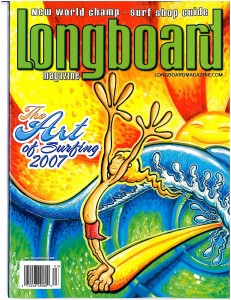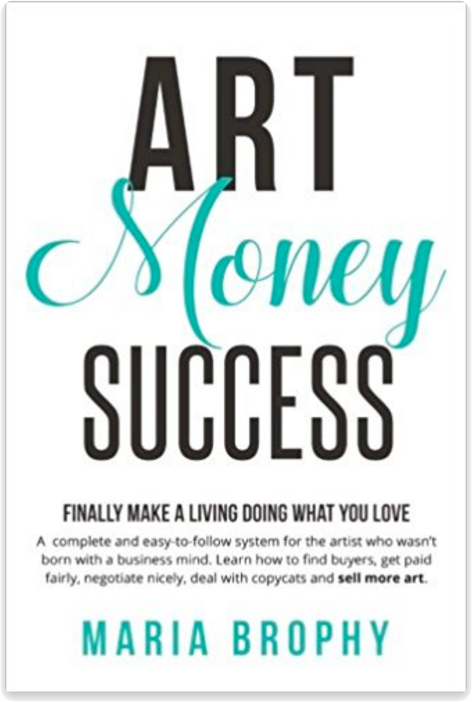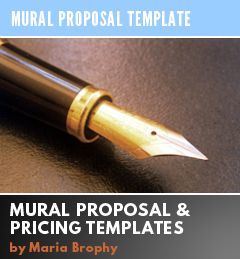 I’m a bit of a media call girl, I must admit.
I’m a bit of a media call girl, I must admit.
A huge amount of my effort goes into public relations, all with the goal of building up the brand of Artist Drew Brophy through media exposure.
Why? Because exposure = popularity = interest = fans = sales = success.
The hard to swallow truth is this:
The most successful people are not necessarily the most talented; they are the best marketed.
Many people mistakenly think they have to go out and spend money on advertising to get press. But for small business owners, that’s not always the best way to go.
Free press is so much better than paid advertising! When you’re written about in an authentic story of interest, the public is more likely to pay attention to it. And, it’s better because it’s free…leave the expensive advertising to the Coca Colas of the world.
Having an authority (like a newspaper or magazine or blog) to write about what you’re doing gives you exposure and credibility. And the more of those 2 things that you get, the more people will know about you AND will trust in what you do.
In the past few years, Drew’s art has been on the COVER of many publications: Surfing Magazine, Eastern Surf, Airbrush Technique Magazine, Longboard Magazine, So Cal Magazine, Pinstriping & Kustom Graphics and SC Times Newspaper, to name a few.
 He’s also had full color art in magazines such as Playboy, Spin, Surfer, Juxtapoz, Art Business News, Royalties and License. (And then there’s numerous mentions in trade magazines, too many to count.)
He’s also had full color art in magazines such as Playboy, Spin, Surfer, Juxtapoz, Art Business News, Royalties and License. (And then there’s numerous mentions in trade magazines, too many to count.)
And though I’d love to say that all of these publications come running to us for a story, that would be a lie.
The truth is, we work at it constantly. We send out press releases several times a year and we keep in close touch with the media.
But, how do you get an editor to care about what you’re doing?
By sending a proper press release: According to expert promoter Artist Tara Reed, a press release is “a one-page document that tells a specific piece of news about your business – it’s an announcement.”
There is a strategy for sending press releases, and I’m going to share it with you.
I’ll use my most recent press release as an example of how sending out a press release is effective in getting free press:
I sent a press release to announce that the Cox Network in San Diego picked up my tv show, THE PAINT SHOP. (You can see the press release here.)
 To announce the news, I emailed a press release to publications and online news sites.
To announce the news, I emailed a press release to publications and online news sites.
The result: Over a dozen blogs and media/news websites picked up and listed my release AND we got an interview with a writer of a column called JOE SURF in Laguna Beach, which made it into the printed paper that week.
HOW TO CREATE/SEND A PRESS RELEASE CHECKLIST:
1.) HAVE SOMETHING TO ANNOUNCE: You have more interesting things to announce than you think!
THE KEY IS TO NOT SELL, BUT TELL. You want to send out “newsworthy” releases, not advertisements. Here’s just a few ideas for you:
- You changed companies
- You won an award
- You wrote a book
- You signed a new deal or license or partnership (get your partners approval before sending)
- You have an event coming up, like a “ten years in business” party or an art show
- You’re doing something great for a charity
- You’re paddleboarding 225 miles down the rapids of the Grand Canyon
- Anything that could be considered Newsworthy!
2.) CREATE YOUR “MEDIA HIT LIST”: Make a list of RELEVENT media sources and their contact information. This can be done in an Excel spreadsheet or your e-mail program where you keep lists.
Many years ago when I started compiling my lists, the internet was not a source of information. I did it the old-fashioned way – I would pick up a newspaper or magazine and I would find out who the editor or journalists were, and add them to my press list. Now, most of the information you’re seeking can be found online.
Separate your contacts into groups, so that you only send what’s relevant to each group. Don’t send a story about a local event to someone in another state (or anything obviously irrelevant). You will quickly be put on their “spam” list and you will kill any chance of them paying attention to future releases.
INDUSTRY LIST: Since Drew is a surf artist, I focus heavily on the surf and action sports industry publications such as Surfer Magazine, TransWorld Surf, etc. There are many online news websites in the industry as well, such as Surfline.com.
LOCAL LIST: Since many newspapers like to write about local people, I also keep a list of relevant journalists and contributors to local newspapers such as the Orange County Register and the SC Times and Sun Coast News.
3.) WRITE YOUR PRESS RELEASE – There are professional standards to how a press release is written and structured, and you can find help with details of how to do that online. Here are a few quick tips:
- Have a compelling title, so that your press release isn’t trashed.
- Keep it to one page, so it’s not trashed.
- Make sure it’s interesting enough, and never ever seem like you’re selling something, so it’s not trashed.
- The overall goal here is this: Write it so that the editor doesn’t throw away your release!
Writing a release often takes me all day long, no kidding. I obsess over making it interesting, compelling, well worded and properly written. But it’s worth the time that I put into it because I always end up getting at least one or two write-ups in the printed media.
You get better and better at writing releases as time goes on. I’ve gotten good at it, though I’m still not quick.
4.) ATTACH A GOOD, PRO PHOTO – as Tara Reed says, “You want to have print-worthy images.”
We always make it a point to have professional-looking photos at the ready when a reporter calls. The more your art or your products or your face is printed in the paper, the better.
(You can read more about photographs in my post titled WHY ARTISTS SHOULD SHOOT THEMSELVES.)
5.) POST YOUR RELEASE TO AN ONLINE DISTRIBUTION SITE: Tara Reed goes into great detail on this in her book. Basically, an online press release site puts your release on the internet, which can be picked up by search engines. It’s like putting on public record your announcement, and it stays there, always.
Some of these sites charge for use, and some are free. I use the free one called PRLOG.Org. I am not opposed to paying for a press release site, I just haven’t found the one I want yet.
6.) EMAIL YOUR “MEDIA HIT LIST” your release. Be sure to send it to the media which is relevant. Then be ready should someone call for an interview or more information.
If you get a call from a writer, jump on it immediately. They work on tight deadlines, and if you don’t respond quick enough, they’ll move onto the next story.
I hope this was helpful. If so, you can thank me by leaving a comment! Or, leave a question in the comments. Either way, I want to know what you’re thinking.
Maria xxoo














